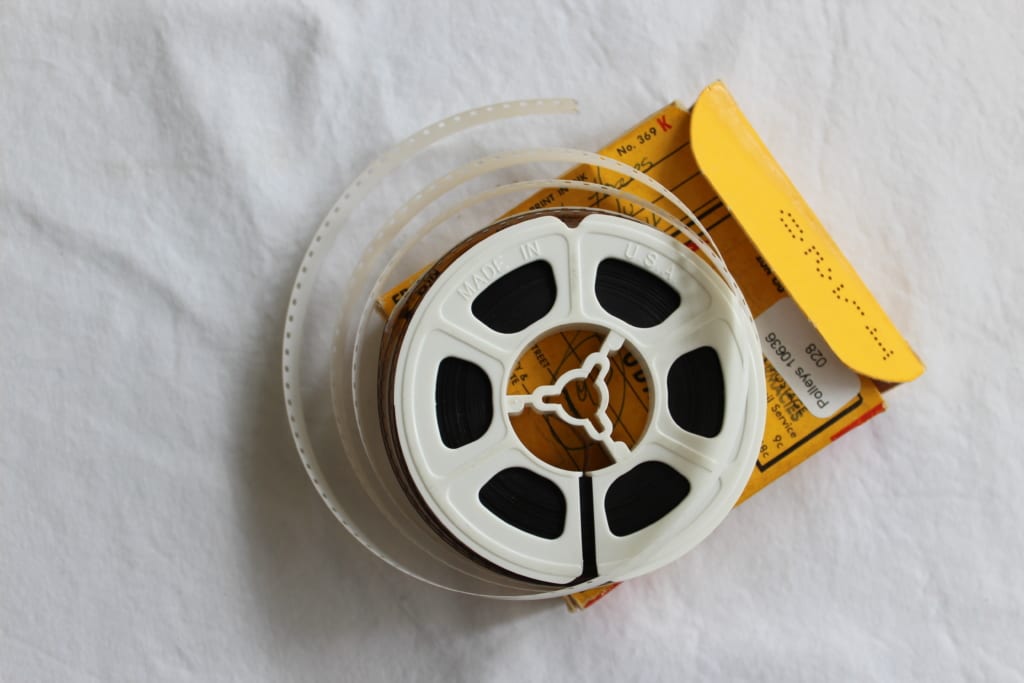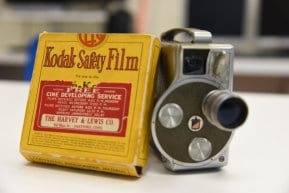8mm film is one of the formats that we are able to watch in the viewing station of our Newton, MA headquarters. We see all sorts of videos when we view them alongside clients or convert them to digital. Here are a few facts that we’ve picked up about 8mm film through the years of digitizing this format:
-
- 8mm film is more appropriately referred to as “Standard 8mm film“, which differentiates it from Super 8 film, another popular format.
- 8mm film was created by Kodak in the 1930s as a cheaper and easier to use alternative to 16mm film.
- The standard playback speed of 8mm film is 16 frames per second.
- The common size of an amateur Standard 8mm film reel is 25 feet of 16mm film. However, the footage is only captured on one half of the film and then reversed and run again to make it 8mm wide. 50 feet of film is viewable after capture, which is 3-4 minutes in playback length.

- We capture 8mm film by running it through special machines that scan each frame individually, instead of projecting the footage and recording the projection.
- Our machines are sprocketless, which means there is an incredibly low chance of damage to the film as we capture it.
- Some 8mm film contains a magnetic band which can hold audio, however it is far more common for the reels to be silent. We can add music over silent films when transferring to digital. Visit our post about how to tell if your film reels have sound.
- Kodak stopped selling Standard 8mm film in the 1990s but continued to produce it for independent vendors.
- 8mm film is rare but available for purchase. Black and white film is still manufactured in Europe.

